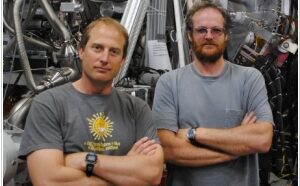General Fusion has laid off around 25% of its staff, even after making progress on a key fusion device. The layoffs come as the Canadian startup faces serious funding challenges.
In a letter shared Monday, CEO Greg Twinney explained the move. He said the team recently compressed plasma using its new LM26 device — a critical step toward achieving fusion. But the company is now running low on cash. He noted that the current investment climate has made raising funds much harder.
General Fusion, founded 23 years ago, is still considered a startup in the fusion race. It has raised $440 million so far. Its backers include Jeff Bezos, Temasek, and BDC Capital. A recent $22.66 million round closed just last July. But the funding hasn’t been enough to prove that its unique method can work at scale.
So far, only one fusion reactor has reached scientific breakeven. That means it produced as much energy as it used — a major step, but far from the ultimate goal. Commercial breakeven requires reactors to generate many times more energy than they consume.
This path has proven expensive. While General Fusion’s funding may seem high, it’s small compared to rivals. Commonwealth Fusion Systems has raised over $2 billion. Helion has topped $1 billion. And Pacific Fusion secured $900 million in one round alone.
General Fusion is also taking a different approach. Most startups rely on either magnetic or inertial confinement. Magnetic confinement uses powerful magnets to control plasma. Inertial confinement typically involves lasers that crush fuel pellets.
Instead, General Fusion is using steam-powered pistons. These pistons compress plasma in a spherical chamber. The U.S. Navy tested a similar idea in the 1970s but gave up due to timing issues. General Fusion believes modern computers can now fix those problems.
If it works, LM26 could hit scientific breakeven. But the company needs fresh capital to get there. Without it, General Fusion may not be able to complete testing or validate its technology.
The situation highlights a tough truth in the clean energy world. Fusion is promising, but still very expensive and unproven. Even with breakthroughs, success depends on steady funding. For General Fusion, the next step is survival.













